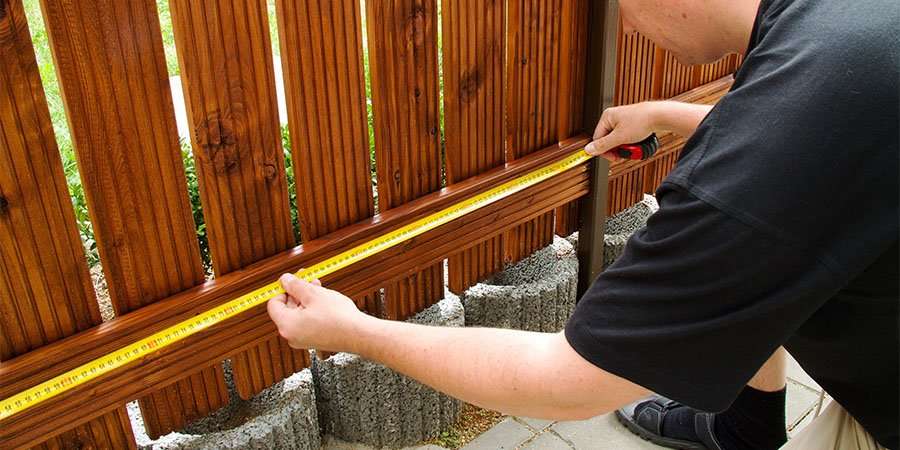All Categories
Featured

While routine maintenance can extend the life of your fencing, there comes a time when repair work no longer are adequate, and it's time to consider replacement. Right here are some key indicators that your fencing may require to be replaced.
- Visible Damage or Wear. Wood fencings are specifically prone to splitting or splintering over time, while vinyl fences can create splits. If the damages is architectural or extensive, fixing individual sections might not be enough, and changing the fence ends up being essential.
- Rot and Degeneration. If you discover that parts of your fence feel soft to the touch or if you see mold and mildew or fungus expanding, it's an indicator of rot. Minor rot can often be fixed, considerable decay, especially near the base of fencing posts, can compromise the stability of the whole fence.
- Leaning or Tilting. A leaning fencing is a clear indicator that something is incorrect with its structural assistance. If the fencing continues to lean in spite of efforts at improvement, it might be time to replace the damaged areas or the entire fence.
- Corrosion or Rust (For Steel Fencings) Particularly one made of wrought iron or deterioration, rust or steel can compromise its framework if you have a metal fence. While small corrosion can typically be removed and treated, considerable rust that endangers the fencing's security is an indication that replacement is needed. It can make the fencing harmful or unsightly if the corrosion has spread considerably or deteriorated the steel. It's far better to replace a greatly worn away metal fence than to proceed trying repairs.
- Bug Infestations. Wooden fencings are a typical target for insects like termites, carpenter ants, and rats. In instances where the damages is severe, the affected fencing posts or boards may require to be replaced to bring back the fencing's stability.
- Trouble Preserving the Fence. If you discover on your own constantly making repair services to the exact same areas of your fence, it could be a sign that the fence is past its prime. If you're spending more money on patching up old areas than you would certainly on a full replacement, it's time to consider replacing the fence entirely.
- Age of the Fencing. The age of your fence plays a significant duty in its overall problem. While the life expectancy of a fence can differ relying on the place, climate, and product problems, the majority of fencings last in between 15 and 20 years. If your fence is coming close to or surpassing its expected life expectancy and revealing indicators of damage, it may be time to change it. Also with regular maintenance, an aging fence will eventually require to be replaced to keep its performance and look.
- Out-of-date Appearance. Occasionally, a fence simply ends up being outdated, no longer matching the design or needs of your residential or commercial property. In time, your preference, the landscape, or the design of your home may transform. If your fencing no more matches your residential or commercial property or meets your needs-- such as personal privacy, security, or appearances-- it may be time to take into consideration a replacement. New secure fencing materials and styles are available that offer improved curb, capability, and resilience appeal.
- Fencing No Longer Serves Its Objective. Your needs for a fence can evolve over time. In such instances, replacing the fence with one that meets your current demands is the best selection.

Verdict. A fencing is a vital part of your home's outside, offering privacy, style, and safety and security. Nevertheless, like any kind of structure, it will eventually reveal indications of aging or damages. If you observe any of the indicators detailed above-- visible damages, rot, leaning, pest problems, or an out-of-date appearance-- it may be time to change your fencing. Replacing an old, worn-out fencing can improve the total worth of your residential or commercial property, improve security, and offer your backyard a fresh appearance. By watching out for these indications, you can make an informed decision regarding when it's time to purchase a brand-new fence.
Latest Posts
Improve Your Home with Overhead Door Solution
Published May 23, 25
1 min read
Understanding Roof Covering Guarantees: What Homeowners Ought To Know
Published May 22, 25
1 min read
How Consistent Auto Maintenance at Montclare Auto Repair Saves You Money
Published May 22, 25
1 min read
More
Latest Posts
Improve Your Home with Overhead Door Solution
Published May 23, 25
1 min read
Understanding Roof Covering Guarantees: What Homeowners Ought To Know
Published May 22, 25
1 min read
How Consistent Auto Maintenance at Montclare Auto Repair Saves You Money
Published May 22, 25
1 min read